Phenyl isothiocyanate
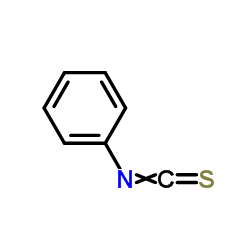
Phenyl isothiocyanate structure
|
Common Name | Phenyl isothiocyanate | ||
|---|---|---|---|---|
| CAS Number | 103-72-0 | Molecular Weight | 135.186 | |
| Density | 1.0±0.1 g/cm3 | Boiling Point | 221.0±9.0 °C at 760 mmHg | |
| Molecular Formula | C7H5NS | Melting Point | −21 °C(lit.) | |
| MSDS | Chinese USA | Flash Point | 87.8±0.0 °C | |
| Symbol |



GHS05, GHS06, GHS08 |
Signal Word | Danger | |
| Name | phenyl isothiocyanate |
|---|---|
| Synonym | More Synonyms |
| Density | 1.0±0.1 g/cm3 |
|---|---|
| Boiling Point | 221.0±9.0 °C at 760 mmHg |
| Melting Point | −21 °C(lit.) |
| Molecular Formula | C7H5NS |
| Molecular Weight | 135.186 |
| Flash Point | 87.8±0.0 °C |
| Exact Mass | 135.014267 |
| PSA | 44.45000 |
| LogP | 3.24 |
| Vapour Pressure | 0.2±0.4 mmHg at 25°C |
| Index of Refraction | 1.571 |
| InChIKey | QKFJKGMPGYROCL-UHFFFAOYSA-N |
| SMILES | S=C=Nc1ccccc1 |
| Stability | Stable. Combustible. Incompatible with strong oxidizing agents, strong acids. |
CHEMICAL IDENTIFICATION
HEALTH HAZARD DATAACUTE TOXICITY DATA
MUTATION DATA
|
| Symbol |



GHS05, GHS06, GHS08 |
|---|---|
| Signal Word | Danger |
| Hazard Statements | H301-H314-H317-H334 |
| Precautionary Statements | P261-P280-P301 + P310-P305 + P351 + P338-P310 |
| Personal Protective Equipment | Faceshields;full-face respirator (US);Gloves;Goggles;multi-purpose combination respirator cartridge (US);type ABEK (EN14387) respirator filter |
| Hazard Codes | T:Toxic;N:Dangerousfortheenvironment; |
| Risk Phrases | R23/24/25;R34;R42/43;R63 |
| Safety Phrases | S9-S16-S29-S33-S60-S61-S62-S36-S26-S23-S45-S36/37/39 |
| RIDADR | UN 1993 3/PG 2 |
| WGK Germany | 3 |
| RTECS | NX9275000 |
| Packaging Group | II |
| Hazard Class | 6.1 |
| HS Code | 2930909090 |
| Precursor 9 | |
|---|---|
| DownStream 10 | |
| HS Code | 2930909090 |
|---|---|
| Summary | 2930909090. other organo-sulphur compounds. VAT:17.0%. Tax rebate rate:13.0%. . MFN tariff:6.5%. General tariff:30.0% |
|
Allyl isothiocyanate induces replication-associated DNA damage response in NSCLC cells and sensitizes to ionizing radiation.
Oncotarget 6(7) , 5237-52, (2015) Allyl isothiocyanate (AITC), a constituent of many cruciferous vegetables exhibits significant anticancer activities in many cancer models. Our studies provide novel insights into AITC-induced antican... |
|
|
Developing structure-activity relationships for the prediction of hepatotoxicity.
Chem. Res. Toxicol. 23 , 1215-22, (2010) Drug-induced liver injury is a major issue of concern and has led to the withdrawal of a significant number of marketed drugs. An understanding of structure-activity relationships (SARs) of chemicals ... |
|
|
A predictive ligand-based Bayesian model for human drug-induced liver injury.
Drug Metab. Dispos. 38 , 2302-8, (2010) Drug-induced liver injury (DILI) is one of the most important reasons for drug development failure at both preapproval and postapproval stages. There has been increased interest in developing predicti... |
| Thiocarbanil |
| isothiocyanic acid phenyl ester |
| UNII:0D58F84LSU |
| Benzene, isothiocyanato- |
| MFCD00004798 |
| Edman Reagent |
| Isothiocyanatobenzene |
| Phenyl isothiocyanate |
| EINECS 203-138-1 |
| benzenisothiocyanate |
 CAS#:75-15-0
CAS#:75-15-0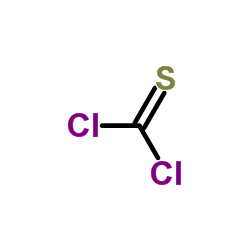 CAS#:463-71-8
CAS#:463-71-8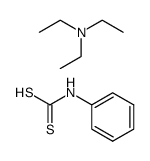 CAS#:43009-16-1
CAS#:43009-16-1 CAS#:698-16-8
CAS#:698-16-8 CAS#:102-08-9
CAS#:102-08-9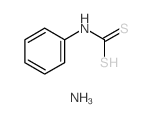 CAS#:1074-52-8
CAS#:1074-52-8 CAS#:93-98-1
CAS#:93-98-1 CAS#:404-24-0
CAS#:404-24-0 CAS#:103-70-8
CAS#:103-70-8![1-[[2-(9-bromoindolo[3,2-b]quinoxalin-6-yl)acetyl]amino]-3-phenylthiourea structure](https://image.chemsrc.com/caspic/453/109322-16-9.png) CAS#:109322-16-9
CAS#:109322-16-9![1-[[2-(2-chloroindolo[2,3-b]quinoxalin-6-yl)acetyl]amino]-3-phenylthiourea structure](https://image.chemsrc.com/caspic/143/109322-11-4.png) CAS#:109322-11-4
CAS#:109322-11-4![3-[(9-bromoindolo[3,2-b]quinoxalin-6-yl)methyl]-4-phenyl-1H-1,2,4-triazole-5-thione structure](https://image.chemsrc.com/caspic/236/109322-26-1.png) CAS#:109322-26-1
CAS#:109322-26-1 CAS#:109768-66-3
CAS#:109768-66-3 CAS#:111782-17-3
CAS#:111782-17-3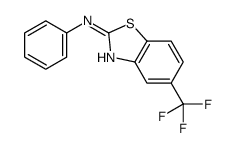 CAS#:105202-01-5
CAS#:105202-01-5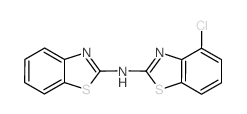 CAS#:111931-61-4
CAS#:111931-61-4![3-[(2-chloroindolo[2,3-b]quinoxalin-6-yl)methyl]-4-phenyl-1H-1,2,4-triazole-5-thione structure](https://image.chemsrc.com/caspic/436/109322-21-6.png) CAS#:109322-21-6
CAS#:109322-21-6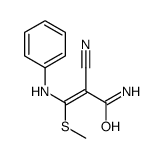 CAS#:107427-77-0
CAS#:107427-77-0![3-phenylpyrido[1,2-a][1,3,5]triazine-2,4-dithione structure](https://image.chemsrc.com/caspic/177/112107-41-2.png) CAS#:112107-41-2
CAS#:112107-41-2
